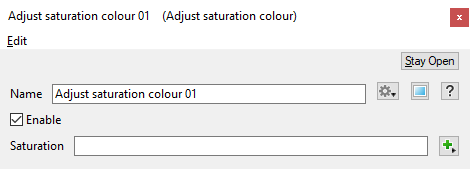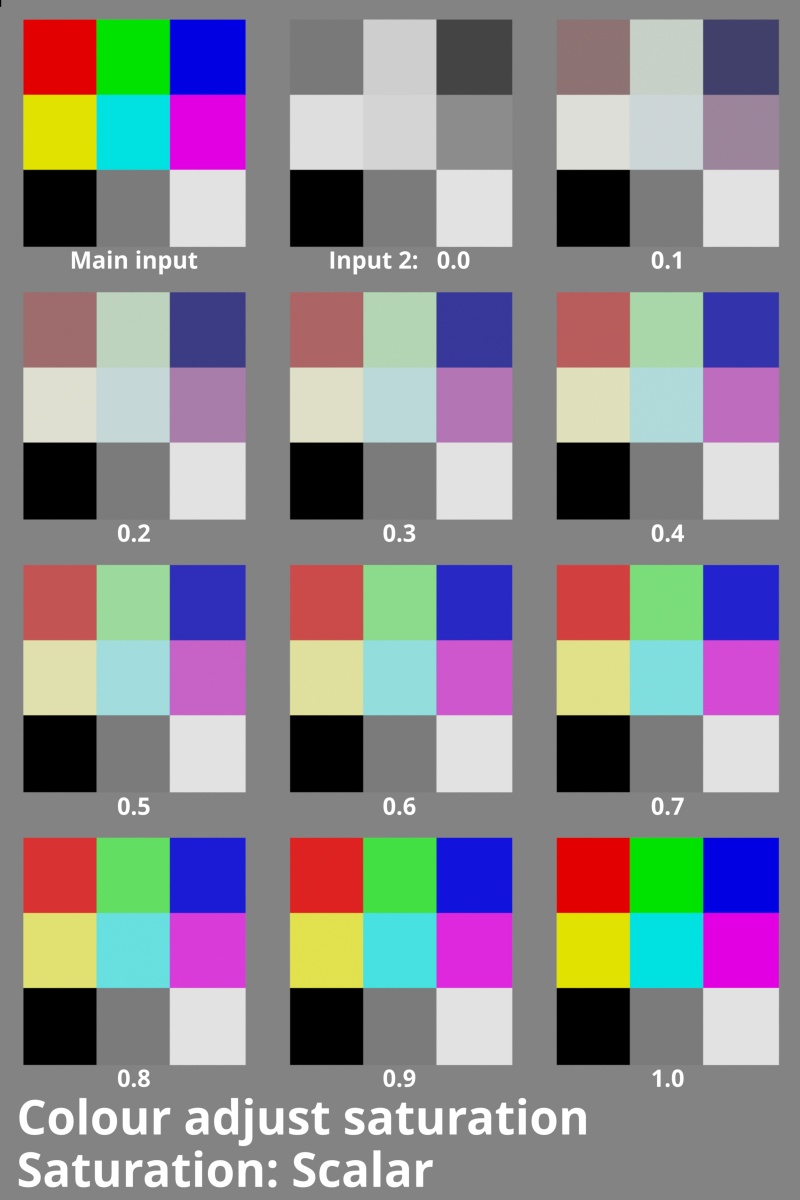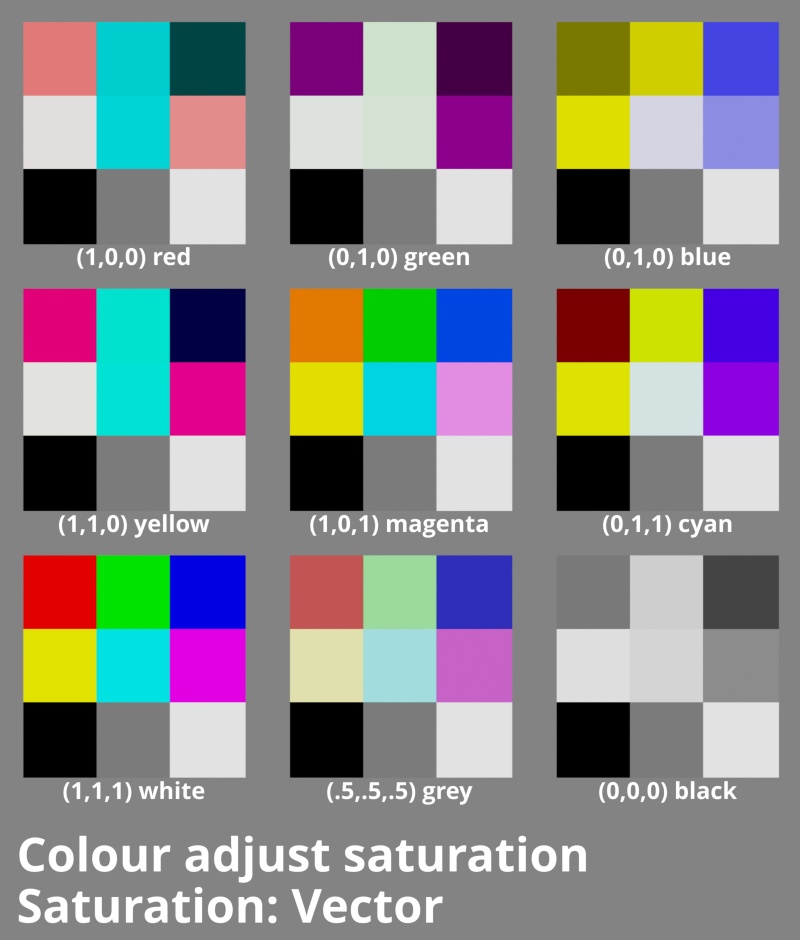Adjust Saturation Colour
Overview[edit]
The Adjust colour saturation node allows you to desaturate the colour values coming into the Main Input by the value assigned to Input 2. Like the Colour to greyscale colour node, the final desaturation value is based on the luminance value of the colour.
- luminance = 0.2125 * r + 0.7152 * g + 0.0724 * b
Settings:
- Name: This setting allows you to apply a descriptive name to the node, which can be helpful when using multiple Adjust colour saturation nodes in a project.
- Enable: When checked, the node is active, and the Main input values will be desaturated. When unchecked the values from the Main input are passed through without any modification.
- Saturation: The value from the shader or function nodes assigned to this setting control the amount of desaturation to the values assigned to the Main Input.
In the example image below, an image map assigned to the Main Input is desaturated by a Constant scalar node assigned to Input 2. With a Constant scalar node value of 0, the Main Input values are completely desaturated, and with a Constant scalar node value of 1, no desaturation takes place.
Desaturation can take place on a component level as well. In the example image below, an image map assigned to the Main Input is desaturated by a Constant vector node assigned to Input 2. When an RGB component value is 0 the component is completely desaturated, and where the component value is 1 no desaturation takes place.
A single object or device in the node network which generates or modifies data and may accept input data or create output data or both, depending on its function. Nodes usually have their own settings which control the data they create or how they modify data passing through them. Nodes are connected together in a network to perform work in a network-based user interface. In Terragen 2 nodes are connected together to describe a scene.
This is essentially the brightness of the colour. Terragen converts RGB colours to greyscale by taking the luminance of the colour.
A shader is a program or set of instructions used in 3D computer graphics to determine the final surface properties of an object or image. This can include arbitrarily complex descriptions of light absorption and diffusion, texture mapping, reflection and refraction, shadowing, surface displacement and post-processing effects. In Terragen 2 shaders are used to construct and modify almost every element of a scene.
A scalar is a single number. 1, 200.45, -45, -0.2 are all examples of scalar values.
A vector is a set of three scalars, normally representing X, Y and Z coordinates. It also commonly represents rotation, where the values are pitch, heading and bank.


